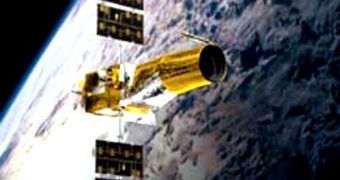Astronomers at the University of Exeter, in the United Kingdo0m, have recently discovered more evidence that massive exoplanets beyond our solar system can have orbits that are tilted in extreme manners. Some of these orbits can be so tilted, that the planets on them appear to be orbiting backwards in regards to their parent stars. Two such examples have already been identified, one after the other. The giant exoplanets in this class almost always revolved very close to their Suns, which is one of the main reasons why they acted they way they did, PhysOrg reports.
Planets are determined to be spawned from protoplanetary disks, which are huge fields of dust and gas that remain around a newly formed star. The disks basically originate in the huge clouds that collapse on themselves, and then ignite, to form the new celestial objects. These circular structures around the stars spin in the same direction they do, therefore the newly formed planet should take on the same orbit. This is what regularly happens in average systems, but some of them constitute exceptions.
The main reason for this is the fact that the new exoplanets that are spawned tend to interact violently with each other. The bodies closest to the parent star have their orbits influenced – as in elongated and tilted – by the actions of the other planets. These influences can become so massive at some point, that the orbits tilt in extreme manners, and the respective exoplanets start orbiting their star backwards. Details of the UE team's investigations appear in the latest issue of the prestigious scientific journal Monthly Notices of the Royal Astronomical Society.
Using the advanced Keck telescope in Hawaii, the team managed to observe the exoplanet COROT-Exo-1b, which was also investigated earlier this year. The scientists determined that the celestial body appeared to have a 77-degree tilt in its orbit, when compared with its parent star. The planet can be seen, at times, from the Earth via telescope, when it passes in front of the COROT star. Astronomers say that, at this point, between 25 and 50 exoplanets of all the identified ones have orbital tilts higher than 30 degrees. Our planet is the most tilted in the solar system, with a 7.1-degree tilt.
“The presence of advanced life on Earth may be contingent on our planetary system having avoided the brunt of planet-planet scatter, keeping Earth on a circular orbit – neither too hot nor too cold for life as we know it. In this scenario, the solar system may have been unusually lucky. Either it avoided catastrophic gravitational encounters between massive planets or it suffered such interactions so long ago that most of the planets had the chance to resettle into nearly circular orbits with little or no tilt,” UE School of Engineering, Mathematics and Physical Sciences expert Frederic Pont explains.

 14 DAY TRIAL //
14 DAY TRIAL //